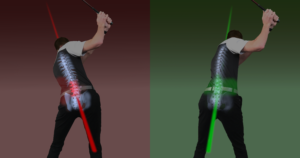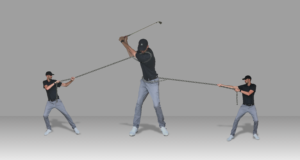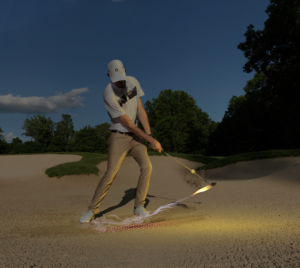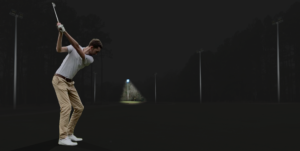I always like to develop resistance and separation in the golf swing. Utilizing these factors can improve many aspects such as, power, efficiency and stability, as well as benefit swing changes.
Why Do We Want To Separate?
Separation creates torque and stretch in the bigger muscles, which in turn allows the body to load efficiently. Being able to engage the bigger muscles can help establish much more consistency in the swing. Separation best occurs when two points of an object are moving in opposite directions. The greater the separation the greater the energy/load that is created.
Example Of Separation in the Golf Swing
Rory McIlroy is a great example of how to dynamically separate the body. A good example of this is his transition between backswing and downswing. Just before his upper body completes the back swing his lower half begins to unwind. It’s at this point where his upper body and lower body are essentially moving in opposite directions.
As mentioned above this is the only instance in the swing where we have the body working/trending in opposite directions. This creates a tremendous amount of torque and energy. A big reason why he is one of the most powerful and longest hitters on tour.
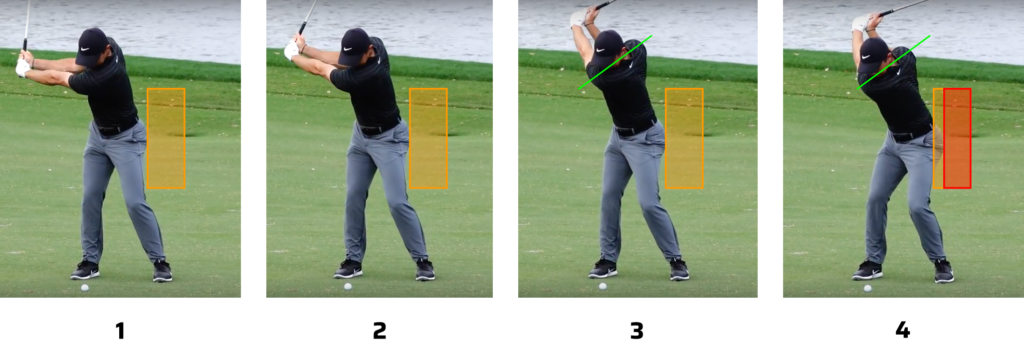
We can see in images 1 – 3 how Rory’s lead hip holds it’s position as he completes his shoulder turn. It’s images 3 & 4 where we see this athletic separation between his upper and lower body. As you can see his shoulders are completing the backswing and are in the same position in both frames. However his lower half has begun to unwind and begin the downswing motion. It’s this separation in the opposite direction to his upper body that creates significant torque.
How Does Resistance Help?
For the most part, there really isn’t a motion in the golf swing where the body is moving in separate directions. In the backswing the bigger muscle move away from the target, and in the downswing they move towards the target. Therefore we have to find and efficient way to compensate. This is where resistance plays an important role.
Resistance is an extremely important component of the swing but must be applied correctly. Resistance is intended to keep the body in check and can help maximize the amount of separation in the swing. This in turn will help retain core components like balance and stability.
I find resistance especially important when addressing a swing change. We want to produce a positive, exaggerated motion without moving to an extreme where it becomes a negative.
This being said we don’t want resistance to be the primary focus. Ultimately too much resistance can lead to a static, weak motion. We want the engaging motion (swing change) to be the primary focus and dominant force. This which will essentially pull/drive the resistance point into a loaded (the correct/adequate) position.
Example Of Resistance In The Golf Swing
Brooks Koepka is one of the most powerful professionals on tour. Observing his backswing he has very little hip rotation. This is a prime example of how his hips (lower half) act as a resistance point for his upper body to rotate excessively/aggressively without swaying or moving off the ball. It’s this resistance of the hips which allows him to efficiently begin separating his upper body from the lower half.
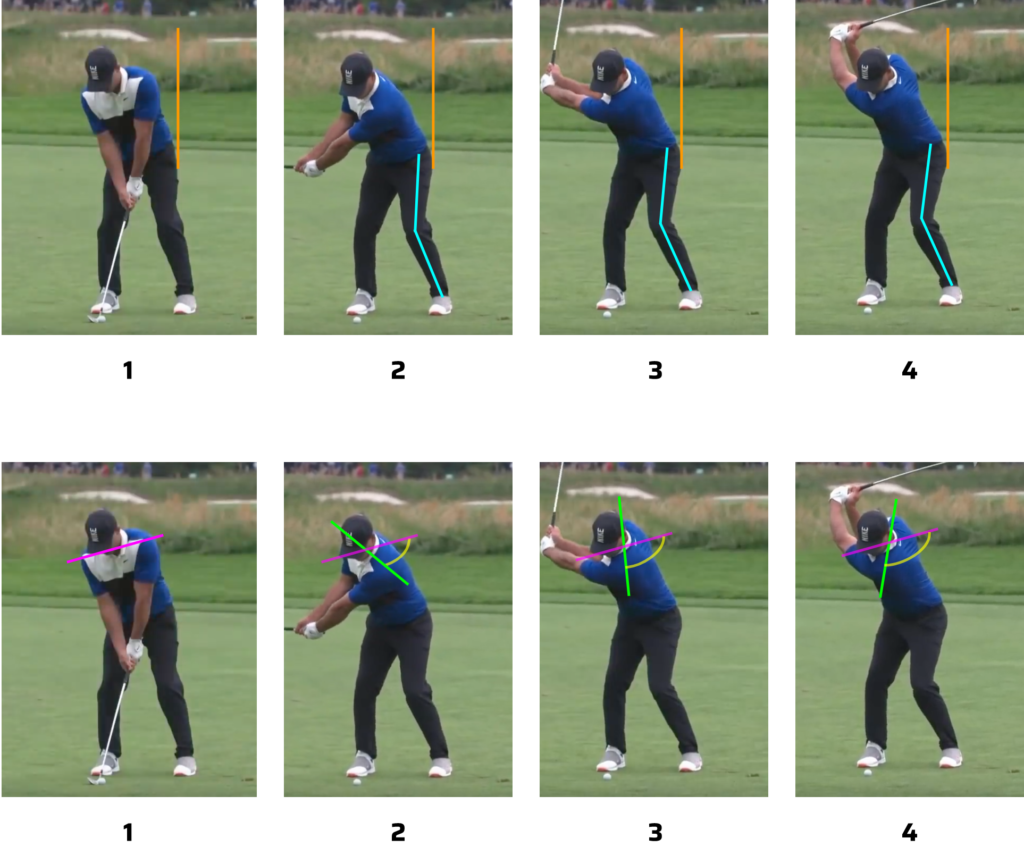
From these images we can see that as he completes his back swing his lead hip stays place. Also frames 2-4 the left leg maintains it’s angles, which shows the resistance it’s providing, as it’s not getting pulled by the rotation of the upper body.
In the images below we can see, that despite the limited motion and the resistance in the lower half, how much shoulder rotation he is able to create. Because of the resistance of his lower half, and the athletic rotation of his upper body Brooks is able create significant load and separation at the top of his swing. All while maintaining great balance and stability.
Summary
Now the majority of golfers don’t have the flexibility and athleticism of Rory and Brooks. However the principles and the science is there to show that utilizing separation and resistance in the golf swing will go a long way to creating efficient load and energy.
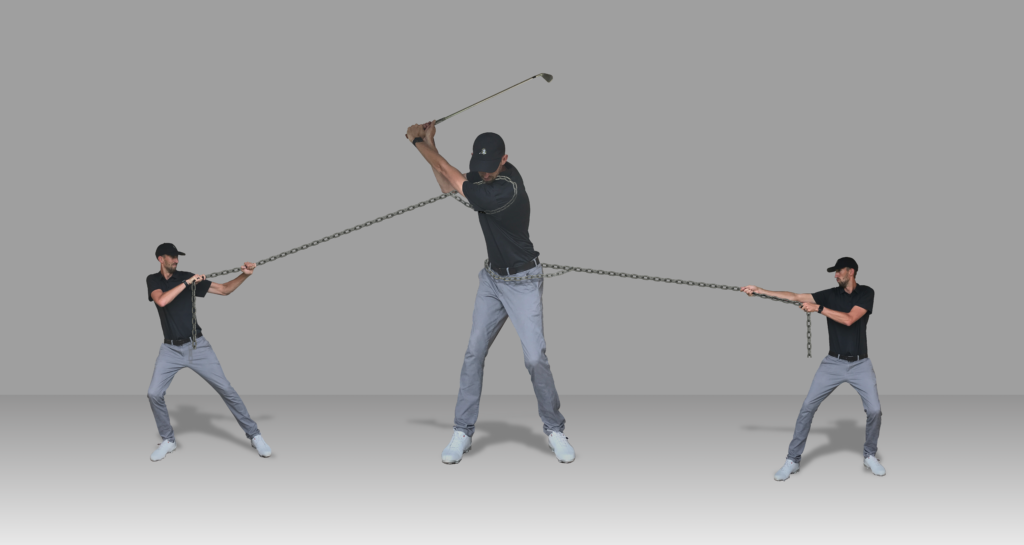
When applying this to your own swing find motions and feels that help you establish torque and stretch in your body. The more load you feel, the more the body will want to unwind and release the energy created. Coordinate a new move with a resistance point, this will help prevent over exaggerating a desired motion and potentially turning it into a negative move.
